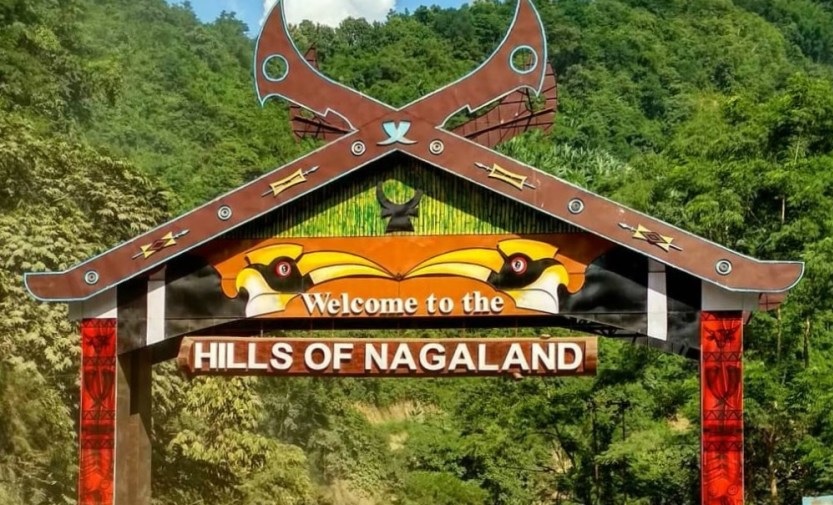Nagaland: A Tapestry of Tribes, Traditions, and Untamed Beauty
Nestled in the northeastern part of India, Nagaland is a place of mystique and lively culture, a monument to the great diversity of the nation. This enchanted tiny state, which covers an area of more than 16,000 square kilometers, is home to numerous tribes, each with unique customs, dialects, and traditions. With its lush hills, tumbling waterfalls, and abundant wildlife, Nagaland enthralls tourists with its breathtaking natural beauty and provides a window into its intriguing cultural mosaic.

The trip into Nagaland is frequently distinguished by its untamed landscape and meandering roads, which provide breath-taking vistas of verdant valleys and mountains shrouded in mist. Traveling further into the state reveals a mosaic of native villages, each holding onto long-standing customs in the face of contemporary influences.
The tribes of Nagaland, most notably the Angami, Ao, Lotha, Rengma, and Sumi, are the foundation of the region’s cultural tapestry. Every tribe adds to the rich fabric of Nagaland’s legacy with its unique speech, dress, and customs. These tribes’ diverse cultures and customs are revealed through the lively festivals they celebrate.

Echoes of the Past: A Land Steeped in History
The Naga people have been in the area for generations, even if their precise origins are still unknown. Burmese chronicles from the 12th century contain the first mentions of the Nagas. The main activities of these fiercely independent tribes were agriculture, headhunting, and maintaining a strong feeling of community.
A turbulent era began with the arrival of the British in the 19th century. A string of brutal battles resulted from the Naga leaders’ ferocious resistance to British attempts at colonization. But the bravery and tenacity of the Nagas never faltered. After India gained independence in 1947, Nagaland became the Naga Hills district and became a state in 1963.
A Mosaic of Cultures: Celebrating Tribal Identity
The Hornbill Festival, which takes place every year in the first week of December, is one of Nagaland’s most famous celebrations. The festival, which takes its name from the state bird, celebrates Naga ancestry and highlights the vast cultural diversity of the tribes via dance, music, traditional sports, and regional cuisine. Witnessing the vibrant traditional clothing, elaborate tribal dances, and catchy folk tunes that capture the essence of Nagaland offers visitors a visual feast.
In addition to the Hornbill Festival, Nagaland has a plethora of other festivals that each provide a distinct cultural experience. Ao tribe’s Moatsu Festival, Angamis’ Sekrenyi, and Lothas’ Tokhu Emong are just a few of the colorful events that characterize Nagaland’s cultural calender.

Another distinguishing feature of the Naga tribes’ rich cultural legacy is their traditional clothing. Men typically wear vibrant loincloths and headgear that represent their tribal identity, while women are frequently seen wearing elaborately woven shawls with traditional themes. These clothes are more than just clothes; they are badges of pride that have been handed down through the ages and are embroidered with lore and customs.
A Feast for the Senses: Culinary Delights and Artistic Expressions
The cuisine of Nagaland is as varied as its cultural terrain, with each tribe having its own specialties. Naga food is a fascinating sensory adventure, featuring everything from spicy chutneys and fragrant rice beer to smoked meats and fermented bamboo shoots. To experience the tastes that characterize Naga gastronomy, adventurous foodies can try traditional meals like smoked pig with akhuni (fermented soya bean), axone (fermented soybean), and bamboo stalk curry.

Apart from cuisine, Nagaland has a thriving artistic heritage. The technique of woodcarving is highly valued, with craftspeople creating elaborate masks and figures that represent myths and legends. Another artistic medium is basket weaving, where several tribes display their own designs and methods. Blacksmithing is thriving, as seen by the creation of antique tools and weaponry.
A Sanctuary for Nature Lovers: Untamed Beauty Beckons
Beyond its rich cultural legacy, Nagaland is a paradise for those who enjoy the outdoors and outdoor activities due to its abundance of natural beauty. Known as the “Valley of Flowers,” Dzukou Valley is a natural wonderland that is covered in a carpet of vibrant blooms in the spring. For those looking for adventure amidst the abundance of nature, trekking across the difficult terrain of Japfu Peak or exploring the depths of the Dzuleke Forest Reserve offer exhilarating experiences.

The wildlife of Nagaland is also fascinating; its vast woods provide as a haven for endangered animals like the Hoolock Gibbon, Blyth’s Tragopan, and the elusive Clouded Leopard. Numerous wildlife sanctuaries and conservation areas throughout the state contribute to the rich tapestry of flora and fauna that call Nagaland home, greatly enriching the state’s biodiversity.
A Journey Through Faith: A Land of Many Religions
In Nagaland, Christianity is the predominate religion. The most common denominations are Baptist and Catholic. Native American religions, however, are still thriving. These animistic beliefs—which are based on the veneration of ancestors and natural spirits—are frequently incorporated into Christian rituals, resulting in a distinctive religious landscape.

Challenges and Looking Ahead: Balancing Tradition and Progress
Nagaland has its share of difficulties despite its stunning natural surroundings and diverse cultural heritage. Particularly in its rural sections, the state struggles with challenges of economic empowerment, healthcare accessible, and infrastructure development. But the landscape is slowly changing, giving promise for a better future, thanks to programs that support sustainable development, tourism, and the preservation of local crafts.
In summary, Nagaland is a magical place where antiquated customs and contemporary goals coexist harmoniously. Everyone who visits is left with a lasting impression by its stunning vistas, lively cultural tapestry, and gracious welcome. Travelers are invited to discover the wonders and solve the riddles of Nagaland, which is still a brilliant symbol of India’s cultural diversity and tenacity as it forges ahead in the twenty-first century.
